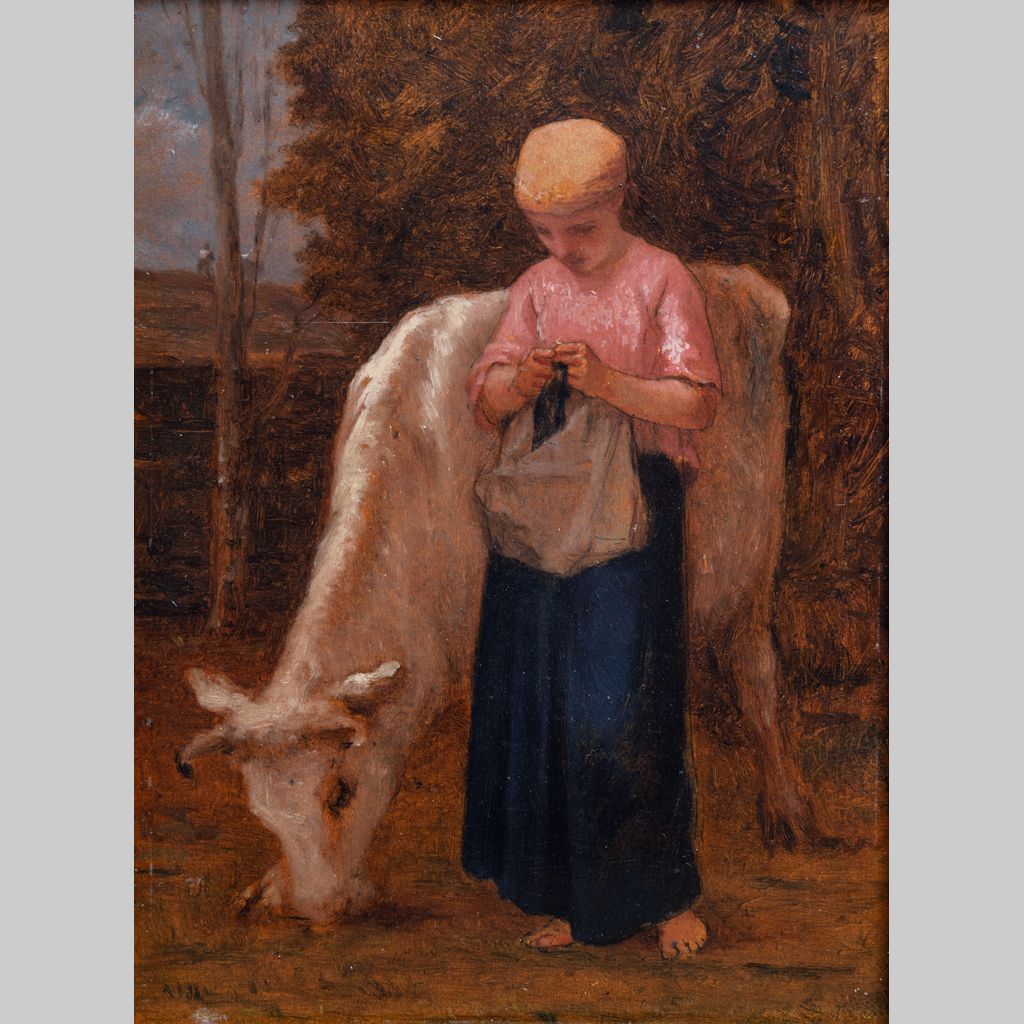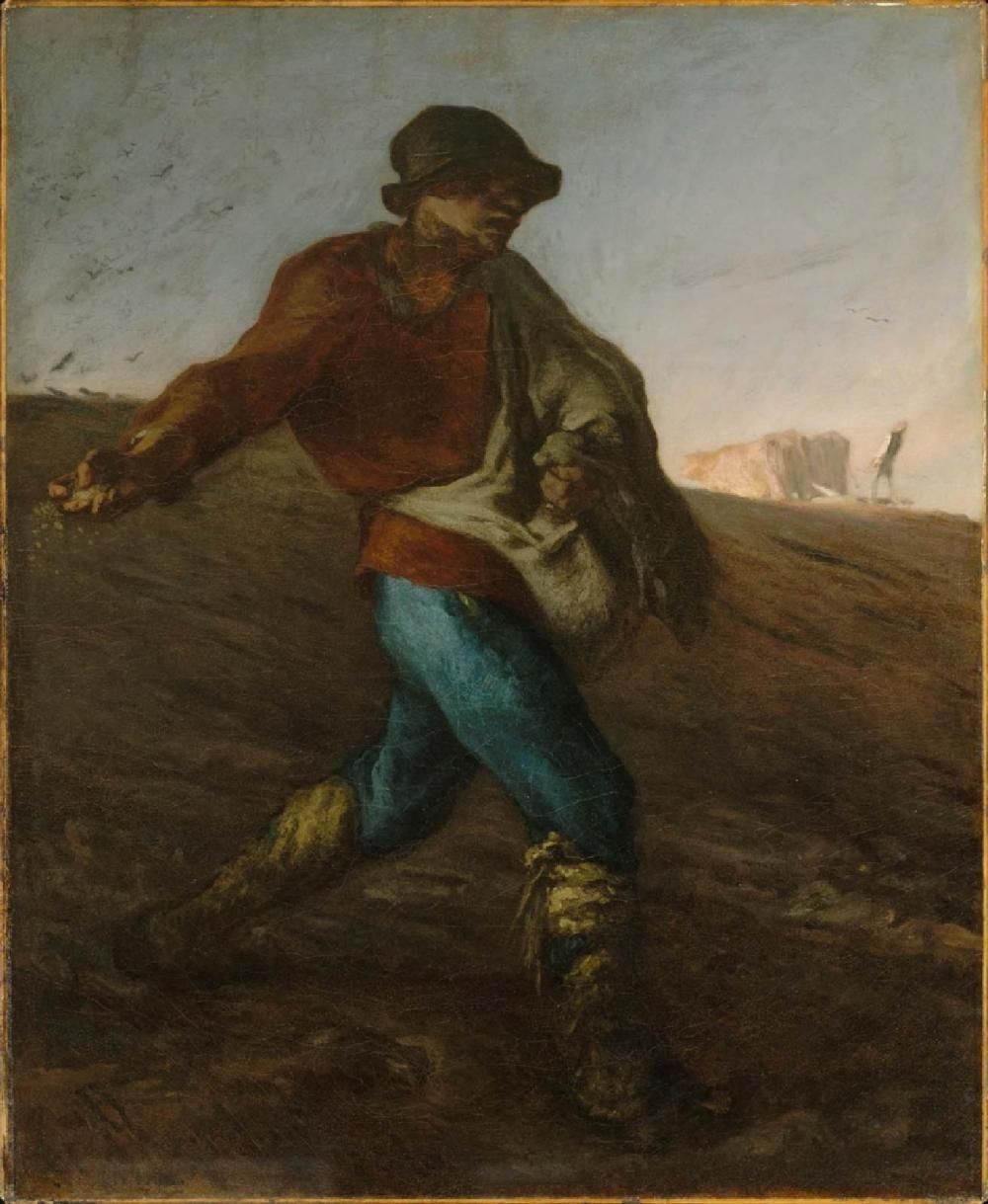William Morris Hunt (1824–79)
Woman Knitting and Cow (Fontainebleau), 1860
Oil on canvas
McMullen Museum of Art, Boston College, Gift of Alexandria & Michael N. Altman P’22, ’24, ’26, 2022.87

Jeffery Howe
Professor Emeritus, Art History

This small painting of a woman knitting while standing beside her cow continues the tradition of painting rural residents Hunt began in France near Fontainebleau. The area was popularized as an artist’s colony by Jean-François Millet (1814–75), Gustave Courbet (1819–77), and other realist artists belonging to the Barbizon school. Hunt’s barefoot cowherd recalls the young cowherd seen receiving alms from Courbet’s sisters in his Young Ladies of the Village (1851, see image). Rural peasants needed to be productive at all times if they were to survive; she cannot stand idle while guarding the cow. Both artists understood the real lives of the rural poor.

John McCoy
Assistant Director, McMullen Museum

In 1846, following studies at several European institutions, American artist William Morris Hunt moved to Paris to be taught by the history painter Thomas Couture (1815–79). This was during the rise of the French realist movement, whose proponents challenged established ideas of what were proper subjects for art by depicting ordinary scenes of ordinary people. At the 1851 Salon, Hunt first encountered the work of realist painter Jean-François Millet (1814–75) through what would become the artist’s most famous work, The Sower (1850, see image). Hunt was so inspired by the painting of peasant labor that he bought the painting and became both a friend and pupil of Millet’s.
In the following years Hunt accompanied Millet to the village of Barbizon in the Fontainebleau region, famous as the birthplace of the Barbizon school, a realist movement primarily dedicated to landscape. Millet is considered a member of this group, although his interest in the region was in its agrarian residents. Hunt, too, dedicated himself to scenes of peasant life. It was perhaps during this time that Hunt observed and sketched the subject for Woman Knitting and Cow; the painting itself was not finished until 1860, five years after his return to America.

The work’s loose lines and limited palette suggest that this was a preliminary sketch; the woman and cow are the same as in Hunt’s larger, more finished Girl with Cows (1860, see image), which also includes a second cow and different trees in the background. The present version, however, features a tilling peasant in the top left distance that the other painting does not.
Hunt’s painting shows the clear influence of Millet, who depicted scenes from peasant life with frankness and dignity. Hunt likewise paints this young woman in a pose of stately grace, even given her bare feet and her toil, industriously knitting while simultaneously tending her cow. Stylistically Hunt and Millet use a similar combination of crisp contour lines and broad, painterly fields of color. While Millet was considered a realist, his peasants often had heroic or monumental poses and physiques; Hunt’s approach is softer, more contemplative, a moment of relative repose for the laborer.

